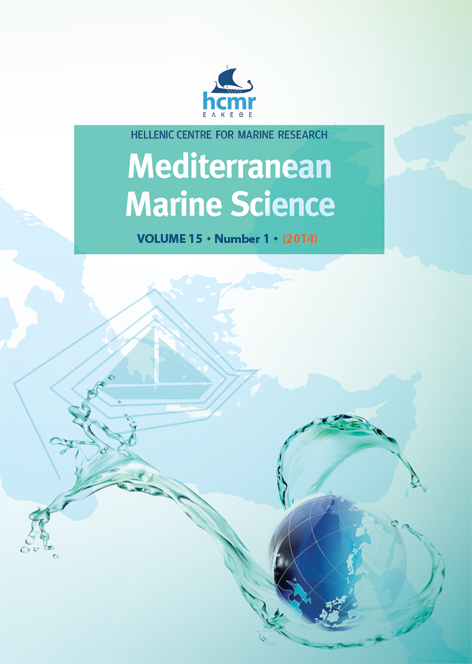Distribution of dissolved inorganic carbon and related parameters in the Thermaikos Gulf (Eastern Mediterranean)
Résumé
A rough first estimate of the magnitude of the air-sea CO2 exchange and the potential role of the Thermaikos Gulf in the transfer of atmospheric CO2 was also obtained. The results showed that during May 1997, the Thermaikos Gulf acted as a weak sink for atmospheric CO2 at a rate of -0.60 - -1.43 mmol m-2 d-1, depending on which formula for the gas transfer velocity was used, and in accordance to recent reports regarding other temperate continental shelves.
Extensive study of the dissolved inorganic carbon and related parameters, and continuous shipboard measurements of fCO2 a and fCO2 w during all seasons are necessary to safely quantify the role of the Thermaikos Gulf in the context of the coastal margins CO2 dynamics.
Article Details
- Comment citer
-
KRASAKOPOULOU, E., ANAGNOSTOU, C., SOUVERMEZOGLOU, E., PAPATHANASSIOU, E., & RAPSOMANIKIS, S. (2006). Distribution of dissolved inorganic carbon and related parameters in the Thermaikos Gulf (Eastern Mediterranean). Mediterranean Marine Science, 7(1), 63–78. https://doi.org/10.12681/mms.178
- Numéro
- Vol. 7 No 1 (2006)
- Rubrique
- Research Article
Authors who publish with this journal agree to the following terms:
- Authors retain copyright and grant the journal right of first publication with the work simultaneously licensed under a Creative Commons Attribution Non-Commercial License that allows others to share the work with an acknowledgement of the work's authorship and initial publication in this journal.
- Authors are able to enter into separate, additional contractual arrangements for the non-exclusive distribution of the journal's published version of the work (e.g. post it to an institutional repository or publish it in a book), with an acknowledgement of its initial publication in this journal.
- Authors are permitted and encouraged to post their work online (preferably in institutional repositories or on their website) prior to and during the submission process, as it can lead to productive exchanges, as well as earlier and greater citation of published work (See The Effect of Open Access).








